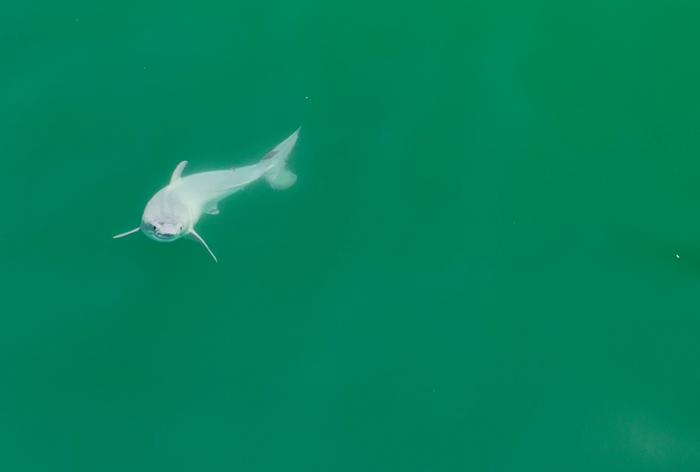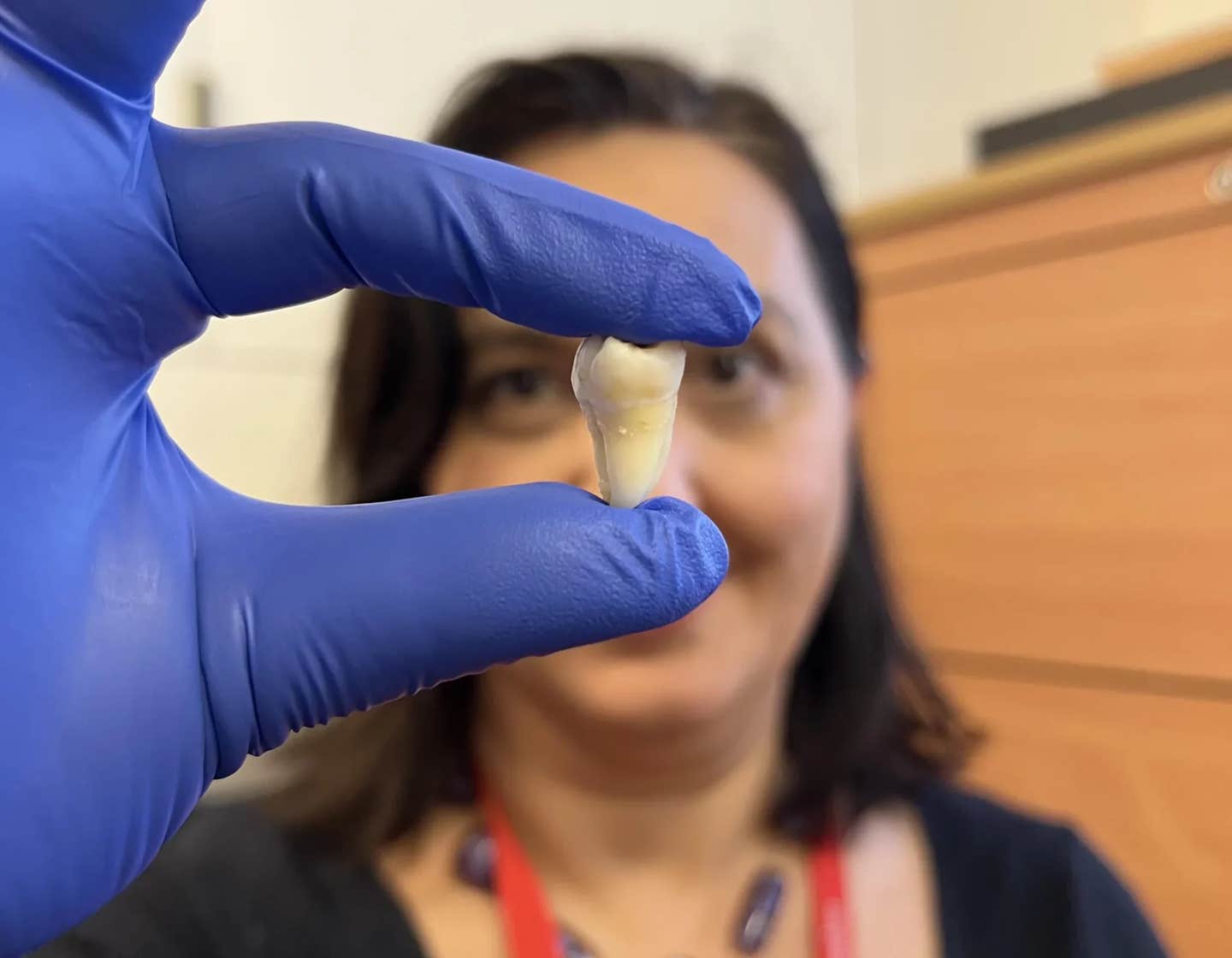Scientists make first-ever sighting of a live newborn great white
Great white sharks, renowned as the largest predatory sharks globally and responsible for numerous fatal attacks on humans

Great white sharks, renowned as the largest predatory sharks globally and responsible for numerous fatal attacks on humans. (CREDIT: Creative Commons)
Great white sharks, renowned as the largest predatory sharks globally and responsible for numerous fatal attacks on humans, are rarely visualized as newborns due to their elusive nature.
However, an unprecedented discovery by wildlife filmmaker Carlos Gauna and UC Riverside biology doctoral student Phillip Sternes has shed light on this mysterious stage of a great white's life.
On July 9, 2023, off the coast of Santa Barbara in California, Gauna and Sternes spotted an intriguing sight through Gauna's drone camera: a shark pup unlike any previously observed. Measuring approximately 5 feet in length, the shark displayed an unusual pure white coloration.
Upon closer examination, Sternes noted, "We enlarged the images, put them in slow motion, and realized the white layer was being shed from the body as it was swimming. I believe it was a newborn white shark shedding its embryonic layer."
Related Stories
Their groundbreaking observations have been detailed in a recent paper published in the Environmental Biology of Fishes journal, highlighting the significance of witnessing a live newborn white shark.
Gauna, also known as The Malibu Artist online, is recognized for his extensive experience filming sharks worldwide. Reflecting on their discovery, he expressed its potential to unravel the longstanding mystery surrounding great white birthing habits, stating, "Where white sharks give birth is one of the holy grails of shark science."
The duo's belief in the authenticity of their finding stems from various factors. Firstly, great white females deliver live pups, nourishing them with a 'milk' secreted in the uterus. Sternes speculated, "I believe what we saw was the baby shedding the intrauterine milk."
View of the newborn white shark. (CREDIT: Carlos Gauna/The Malibu Artist)
Additionally, the presence of large, likely pregnant great whites in the vicinity supports their hypothesis. Gauna recalled filming three sizable sharks, possibly pregnant, in the area leading up to the observation. He remarked, "It’s not a stretch to deduce where the baby came from."
The size and shape of the observed shark further align with characteristics of a newborn. Sternes described it as "thin, short, and rounded," suggesting it was likely only hours or a day old at most.
Locations with high residency of young of the year white sharks. (CREDIT: Springer Link)
Moreover, the location off the central California coast has long been proposed as a potential birthing site for great whites. Sternes emphasized, "This may well be the first evidence we have of a pup in the wild, making this a definitive birthing location."
Contrary to common belief that great whites are born far out at sea, the proximity of this sighting to the shore — approximately 1,000 feet from the beach — implies that shallow waters may serve as crucial birthing grounds.
Images of a white shark that has suffered abrasions due to a fishing leader that it retains after being released by fishermen (CREDIT: Carlos Gauna)
Given the endangered status of great whites internationally, Sternes emphasized the need for further research to confirm these waters as a breeding ground and urged policymakers to protect them to ensure the species' survival.
Gauna and Sternes' groundbreaking observation of a live newborn white shark provides invaluable insights into the elusive birthing habits of these apex predators. Their findings underscore the importance of continued research and conservation efforts to safeguard the future of great white sharks.
Note: Materials provided above by The Brighter Side of News. Content may be edited for style and length.
Like these kind of feel good stories? Get the Brighter Side of News' newsletter.
Joseph Shavit
Head Science News Writer | Communicating Innovation & Discovery
Based in Los Angeles, Joseph Shavit is an accomplished science journalist, head science news writer and co-founder at The Brighter Side of News, where he translates cutting-edge discoveries into compelling stories for a broad audience. With a strong background spanning science, business, product management, media leadership, and entrepreneurship, Joseph brings a unique perspective to science communication. His expertise allows him to uncover the intersection of technological advancements and market potential, shedding light on how groundbreaking research evolves into transformative products and industries.



